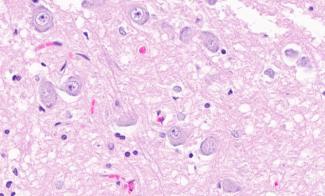
LifeNet Health LifeSciences Human Biospecimens Specializes in Neurological Tissues
LifeNet Health LifeSciences Human Biospecimens offers high-quality human brain and other neurological tissues recovered with the best practices in procurement by highly trained tissue recovery specialists. Tissues can be recovered from both non-diseased control donors and donors with medical conditions (i.e. Alzheimer’s Disease, TBI, PTSD).
LifeNet Health is able to recover and prepare neurological biospecimens for a variety of research including histological assessment, metabolic function, genomics, proteomics, and other novel applications. Scientists can utilize recovered cadaveric brain tissue for basic research, biomarker identification, diagnostic testing, and drug discovery, all of which have the potential for novel treatment modalities.
LifeNet Health adheres to the highest standards of ethical, safe research recovery. Our authorization for research donation includes full disclosure, informed consent for broad tissue use and maintains compliance with the Uniform Anatomical Gift Act and rules and regulation promulgated by the Food and Drug Administration (FDA) and the AATB (American Association of Tissue Banks)
Neurological Tissues Donated and Recovered
- Brain
- Coronal sections
- Pituitary gland
- Dorsal root ganglia (DRG)
- Peripheral nerves
- Cerebrospinal fluid (CSF)
Features of LifeNet Health LifeSciences Biospecimens for Research
- Industry-leading recovery, transport, and handling protocols
- Comprehensive donor medical and social history provided
- Recovery of tissues with low post-mortem interval (PMI), when requested
- Direct customer service support
- Access to technical expertise and guidance from LifeSciences’ team of scientists
Utilizing Neurological Tissues for Prevention, Diagnosis, and Treatment
LifeNet Health has extensive experience in neurological tissue recovery. LifeNet Health identifies, authorizes, and recovers post-mortem neurological biospecimens support the scientific research in projects, such as:
- Screening, authorization, and recovery of brains from U.S. military service men/women suspected of having traumatic brain injury to better understand TBI and PTSD in the military (Uniform Services University Brain Tissue Repository)
- Recovery of brain tissue to support PTSD, depression, and non-diseased control research (the National Center for PTSD Brain Bank (Durham VAMC) and DUKE Neuropsychiatric Brain Bank Support of the development of the Van Andel Institute MiND program brain biorepository (Van Andel Institute)
